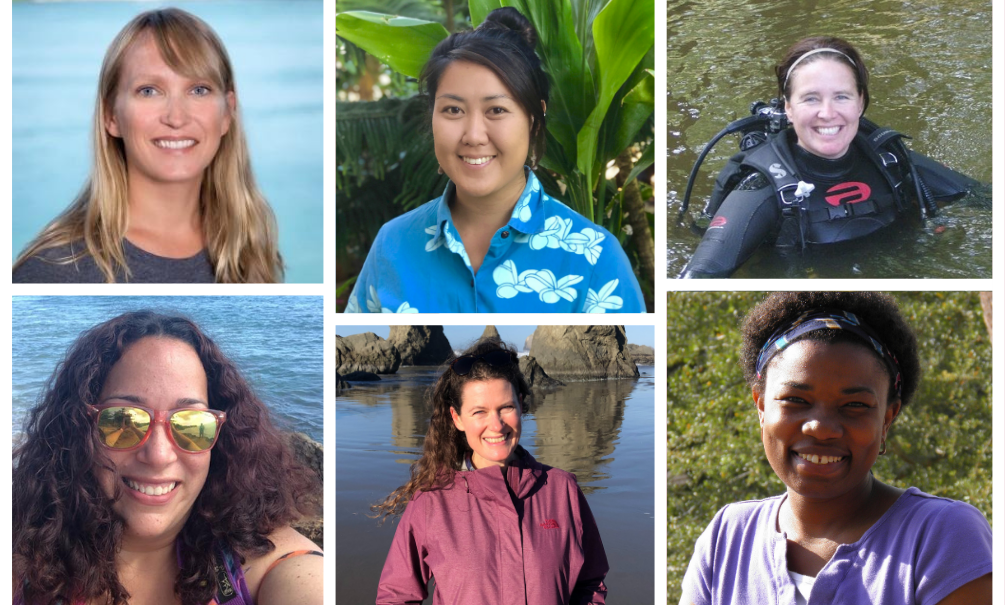
Champions of the Blue: Celebrating Women in Science Around the National Marine Sanctuary System
February 11 marks the International Day of Women and Girls in Science, a day that celebrates and encourages the participation of women and girls in STEM (Science, Technology, Engineering, and Math) fields around the world. This day stemmed from a conversation that began in 2015 at the inaugural High-Level World Women’s Health and Development Forum at the United Nations Headquarters. Now in its sixth year, this day has transformed into a movement that celebrates women and girls in science and brings attention to gender equality issues in education and the workforce.
According to the UNESCO Institute of Statistics, fewer than 30 percent of researchers worldwide are women. Studies also show women in STEM fields have their work published less, are paid less than male peers, and do not advance as far in their careers as men, who achieve leadership roles at a rate several times that of women. International Day of Women and Girls in Science works to change this narrative and promote equal access to and participation in science starting with awareness, mentorship, and advocating for more women in visible leadership roles.
In honor of this important day, we are joining this movement and celebrating some incredible #womeninscience who do important and innovative work to support and protect America’s national marine sanctuaries and monuments. Whether publishing research, educating learners of all ages, or working with others to inform policy, the work these women do paves the way for women and girls in the future.
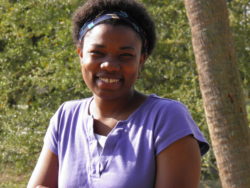 Sue C. Ebanks, Ph.D.
Sue C. Ebanks, Ph.D.
Gray’s Reef National Marine Sanctuary
Dr. Sue Ebanks is a tenured Associate Professor at Savannah State University (SSU) for the Department of Marine and Environmental Sciences. She represents SSU with the Historically Black Colleges and Universities (HBCU) Geosciences Working Group, Consortium for Ocean Leadership, National Association of Marine Laboratories, and Southern Association of Marine Laboratories. Dr. Ebanks earned a Master of Science in Marine Sciences from SSU and a doctorate from Rosenstiel School of Marine and Atmospheric Science at the University of Miami. Her research focuses on areas of aquatic and marine biology, environmental toxicology, physiological ecology, and behavioral ecology but, most recently, Dr. Ebanks and her students shifted their focus on the issue of particulate plastics in Georgia waters.
Since 2016, Dr. Ebanks has served on the Gray’s Reef National Marine Sanctuary Foundation’s Board of Trustees. In this capacity, she works with the Education subcommittee on developing funding proposals to advance awareness and protection of Gray’s Reef National Marine Sanctuary. Through these efforts, Dr. Ebanks hopes to share her research on microplastics and other coastal hazards with greater and more diverse demographic groups in order to develop stronger environmental policies and practices. “By educating and including a more representative group of stakeholders in coastal environmental management,” said Dr. Ebanks, “we increase the likelihood of seeing a true path toward greater sustainability of environmental preservation.”
Throughout her incredible career, Dr. Ebanks has coauthored a paper on K12 classroom activity in Current, an article in Oceanography, and a book chapter on proposed solutions to the challenges of social diversity in marine science and the roles that HBCUs have in the process. Currently, she is collaborating on an NSF-funded project, GP-IMPACT: Expanding HBCU Pathways for Geoscience Education, with Dr. Edith Davis of Florida A&M University and Dr. Reginald Archer of Tennessee State University. On diversity in STEM, Dr. Ebanks said, “While having diverse groups at the table sometimes means a bit of chaos and may even require that I’ll have to tap or even stand on the table to refocus the discussion, the potential return on investment is so great that the discomfort that is experienced in the difficult interactions is well worth it.”
One of the most rewarding aspects of Dr. Ebanks’ work is witnessing others recognize their potential to make a positive impact through their work. Her advice to women in science is “Don’t let anyone or anything steal your dream and recognize that the realization of that dream may come in a way that you least expect it.”
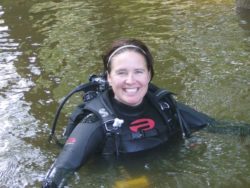 Stephanie Gandulla
Stephanie Gandulla
Thunder Bay National Marine Sanctuary
Stephanie Gandulla is a maritime archaeologist and the Research Coordinator for Thunder Bay National Marine Sanctuary (TBNMS). She learned how to scuba dive over twenty years ago, and has become a NOAA Scientific Diver, a certified freediver with Freediving Instructors International, and a PADI Dive Instructor. As a NOAA Scientific Diver, she explores and documents dozens of historic shipwrecks in the waters of TBNMS.
Stephanie has participated in archaeological expeditions around the world including the Great Lakes, Sweden, Jamaica, the South Pacific, and throughout the southeastern United States. In addition to leading research expeditions for TBNMS, Stephanie manages media relations and community outreach for the sanctuary. “Our mission here at TBNMS is to protect the Great Lakes and their rich history,” said Stephanie. “By prioritizing and facilitating access to the fragile shipwrecks that embody this history, we succeed in creating connections… connections that inspire conservation.”
Stephanie shares the wonders of TBNMS, and our greater blue planet, in various ways to the world. As an educator with NOAA, she brings STEM concepts to life utilizing remotely operated vehicles (ROVs), and guides students of all ages in programs involving maritime heritage, marine debris, and marine technology. She has also worked with high school students on launching a grassroots campaign on plastic pollution awareness and prevention. As the current Director of the Thunder Bay International Film Festival, she communicates important ocean and Great Lakes issues to new audiences through film. One of the most rewarding aspects of her many roles is engaging people with America’s shared maritime history, and witnessing someone see a shipwreck for the first time.
“My advice to young women is to do things that ignite your imaginations,” said Stephanie. “There are careers in exploration and STEM that we can’t even fathom today. Always keep your mind open and do what you can to be prepared for new experiences and opportunities. Also, don’t be afraid to ask for guidance.”
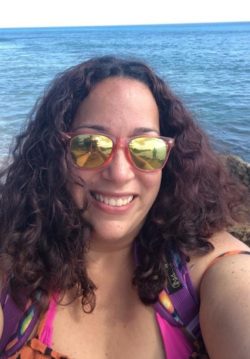 Mara Morales García
Mara Morales García
National Marine Sanctuary Foundation & NOAA Marine Debris Program Grantee
Mara Morales García is a Chemistry Professor at Esculea Especializada en Ciencias, Matematica y Tecnologia (CIMATEC), a specialized school in science, mathematics, and technology where she encourages students to go beyond the classroom walls. She earned a bachelor’s degree in Chemistry at the University of Puerto Rico-Rio Piedras Campus (UPRRP) where she was inspired and mentored by fellow female scientist, Dr. Ingrid Montes. While pursuing her graduate studies in chemistry, she found her passion in education and completed her master’s degree in Chemistry Teaching and Curriculum.
At CIMATEC, Mara moderates many student organizations including the National Honor Society, ACS Chemclub, American Cancer Society, and Marina Club, which received a National Marine Sanctuary Foundation and NOAA Marine Debris Program grant to engage students in ocean science and marine debris issues. With the Marina Club, Mara leads female high school students in workshops where they are creating short Spanish language videos as part of a year-long video series to raise awareness of marine debris issues. The goal of this project is to empower women with knowledge and the tools to become future scientists while they address another local need: marine debris education in Spanish. “I consider myself to be passionate about extracurricular activities as it is an excellent vehicle to impact and empower students through informal education,” said Mara. “Through my passion for this type of activity, I seek to motivate my students to get involved in activities aimed at solving problems that affect society worldwide from a scientific perspective.”
Mara and her team are not only teaching about marine debris source and prevention but paving a way for young students to succeed in science. To young women pursuing a career in STEM, Mara says “Do it! Do not be intimidated. If it is your passion, you’ll have the potential for achieving everything you set out to do.”
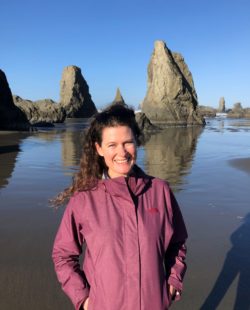 Kirsten Grorud-Colvert, Ph.D
Kirsten Grorud-Colvert, Ph.D
Capitol Hill Ocean Week panelist and sanctuaries roundtable participant
Dr. Kirsten Grorud-Colvert is a marine ecologist and Associate Professor at Oregon State University, located within the traditional tribal homelands of the Ampinefu (or ‘Mary’s River’) band of the Kalapuya. She studies marine biodiversity, the life histories of fished species, and ocean management. She is also the Director of The Science of Marine Reserves Project, and is currently co-leading The MPA Guide, a consortium of international partners working to clarify what marine protected areas (MPAs) are, what they can do, and how we can design them to achieve greater benefits for people and nature. In 2020, Dr. Grorud-Colvert participated as a panelist at Capitol Hill Ocean Week’s Defining Priorities for Meaningful Protection plenary to discuss how protected areas can help achieve effective protection and greater positive outcomes for people and the planet. She shared her years of research and expertise on MPAs and how it can be used to inform MPA design and management in the future, which can be seen here.
Dr. Grorud-Colvert is engaged in many conversations and commitments on ocean protection at a national and international level, including serving on the Decadal Evaluation Working Group for the California MPAs established by the Marine Life Protection Act, as a Science Advisor to the U.S. National Ocean Protection Coalition, and by helping to track progress on global commitments to marine protected areas made at the annual Our Ocean Conference. Currently, she is also taking part in a series of virtual roundtable discussions and interviews about the National Marine Sanctuaries Act, led by the National Marine Sanctuary Foundation and Office of National Marine Sanctuaries, to guide the next 50 years of the National Marine Sanctuary System. The roundtables will provide recommendations for promoting the protection, restoration, and effective management of the system including ways to be more inclusive and more adaptive in the future. “In each of these, I bring a perspective of the need to preserve healthy ocean systems for the benefits they provide to people who depend on them and to our planet overall,” said Dr. Grorud-Colvert. “I feel that responsibility deeply and am committed to bringing science to the decision-making table while also helping to increase the inclusion of diverse voices who share those goals.”
Dr. Grorud-Colvert’s favorite thing about being a researcher is the opportunity to collaborate with many people from different areas of expertise and with different perspectives. To women in science, she says, “Know that you have a place at the table and an important perspective to give. Seek out mentors, including those in fields very different from your own. And mentor those who are in stages you’ve already moved on from—sharing experiences helps invite more people in. Each of us can play a role in making STEM more accessible, more diverse, and more innovative.”
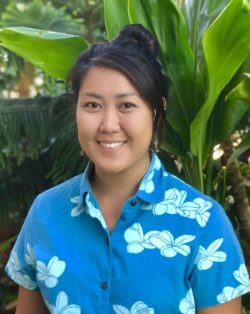 Kanoeʻulalani Morishige, Ph.D. Candidate
Kanoeʻulalani Morishige, Ph.D. Candidate
Papahānaumokuākea Marine National Monument
Born and raised in Hawai’i, Kanoeʻulalani Morishige is an ʻōiwi (Native Hawaiian) Marine Biology Ph.D. Candidate at the University of Hawaiʻi at Mānoa. Her passion is rooted in serving Native Hawaiian and local communities by integrating indigenous knowledge systems and academic research.
For the last 12 years, Kanoe has been part of a collective team of Native Hawaiian women scientists with Nā Maka Onaona, a Native Hawaiian non-profit organization dedicated to understanding the unique wave-swept intertidal ecosystems from the Main Hawaiian Islands to Papahānaumokuākea Marine National Monument (PMNM). Specifically, the team works with community partners to integrate ʻōiwi knowledge systems and biological tools tracking seasonal cycles of intertidal communities and population sizes and spawning seasons of key resource grazers. Kanoe’s dissertation focuses specifically on exploring the effects of environmental biophysical drivers on the seasonality, timing, and maternal investment trade-offs of a culturally and ecologically significant intertidal urchin, hāʻukeʻuke (Colobocentrotus atratus). “My favorite part of being a researcher is using my role to build local research capacity and amplify the ʻōiwi voices as the foundation of research and management,” said Kanoe. “I am humbled to always learn from the many fishermen, farmers, teachers, and communities of aunties, uncles, and kūpuna (elders) I am fortunate to work with.”
Kanoe also sits on the Reserve Advisory Council as the Conservation Representative for PMNM. Her role in the Conservation Primary seat enables her to provide input on multi-faceted resource management issues that arise within PMNM. “I see my kuleana (responsibility) to weigh in on these issues based on understanding the need for supporting healthy and thriving relationships between people and places in Papahānaumokuākea,” said Kanoe.
To young women pursuing science, Kanoe said “Find your support system and use your privileges to uplift other young women especially those who are indigenous and under-represented minorities. You alone are never more important than the need to create spaces for diverse and inclusive representation in STEM. Lastly, find a way to serve your local community without any agenda for personal gain. Working with communities is where some of the most profound lessons of humility and growth come from that will ultimately make you not just a better scientist, but a better person.”
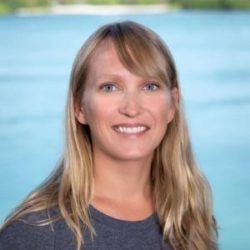 Erinn Muller, Ph.D
Erinn Muller, Ph.D
Florida Keys National Marine Sanctuary
Dr. Erinn Muller is a Senior Scientist at Mote Marine Laboratory and manages the Coral Restoration Program and the Coral Health and Disease Program. After receiving her Ph.D. from Florida Institute of Technology, Dr. Muller began working at Mote in 2012 under the Mote Marine Laboratory Postdoctoral Fellowship. From 2018 until 2020, she served as the Science Director of Mote’s Elizabeth Moore International Center for Coral Reef Research and Restoration. Throughout her career, she has been honored by many awards including the Young Scientist of the Year Award from the International Society for Reef Studies in 2015 and the prestigious Presidential Early Career Awards for Scientists and Engineers (PECASE) in 2019.
Over her 17 years (and counting) of studying coral reefs, she has witnessed the severe losses of corals and the degradation of healthy reefs. Throughout the difficulty of observing these events, she commends the staff at Mote for their support and positive thinking to continue the fight to save these reefs. Currently, she is a member of the Sanctuary Advisory Council for Florida Keys National Marine Sanctuary (FKNMS) and the liaison for Mote’s involvement in Mission: Iconic Reefs, an ecosystem-based restoration of seven iconic reefs located in FKNMS. “I am incredibly excited to be a part of this collaborative initiative, which focuses our efforts and provides hope for successful large-scale restoration,” said Dr. Muller. “This effort brings the much needed attention and funding necessary to restore Florida’s Coral Reef.”
On being a woman in STEM, Dr. Muller said “It’s amazing! You get to research important issues, solve problems, and change the world.” To young women pursuing a career in science, Dr. Muller added “You can be a successful woman in science all on your own, but it’s easier when you have great mentors. My success rests on the shoulders of the amazing mentors (many of them women!) that have supported me, taught me, and believed in me. I really try to pay it forward and mentor my staff with the same level of dedication shown by my mentors.”
